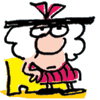Rockies pitcher Ryan Feltner finds outlet in abstract painting
Published in Baseball
Last May 13, at Coors Field, in the third inning, Philadelphia’s Nick Castellanos hit a line drive back to the mound. Feltner reacted just in time to avoid getting hit in the face, but the baseball struck the back of his head. He suffered a concussion and a fractured skull. Dizziness and migraine headaches lingered for about a month. The scary injury kept Feltner off a big-league mound for almost 19 weeks.
Now, he’s attempting to become a fixture in Colorado’s rotation. His April 6 start against Tampa Bay at Coors was among the best performances in recent Rockies history. His last start, a 7-6 loss to the Phillies, didn’t go nearly as well.
But Feltner, who graduated from Ohio State with a degree in strategic communications, is much more than an athlete.
Feltner loves art of all kinds, especially abstract paintings and music. His inspiration comes from abstract expressionists Mark Rothko and Jackson Pollock, and Rick Rubin, the American record executive and producer who co-founded Def Jam Recordings.
“I take a lot of different techniques from different artists,” Feltner said. “I don’t know how many different techniques I used, but in my best paintings, I incorporate a lot of different ones and use kind of a combination of things I’ve learned from artists that I like.”
Pollack once said: “When I am in my painting, I’m not aware of what I’m doing. …I have no fears about making changes, destroying the image, etc., because the painting has a life of its own.”
Feltner agrees with Pollack’s philosophy.
Rothko’s abstract work, often composed of several large rectangular blocks, is renowned for its use of color, which is why Feltner is so inspired by it.
According to the National Gallery of Art, Rothko’s classic paintings of the 1950s are “characterized by expanding dimensions and an increasingly simplified use of form, brilliant hues, and broad, thin washes of color. In his large, floating rectangles of color, which seem to engulf the spectator, he explored with a rare mastery of nuance the expressive potential of color contrasts and modulations.”
Rothko said that his abstract images represented the fundamental nature of “human drama.”
...continued
©2024 MediaNews Group, Inc. Visit at denverpost.com. Distributed by Tribune Content Agency, LLC.






Comments